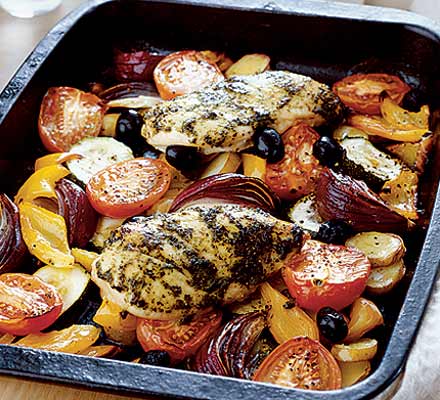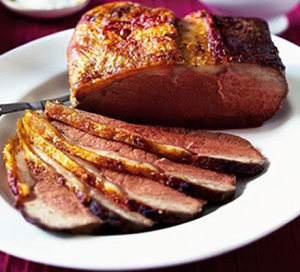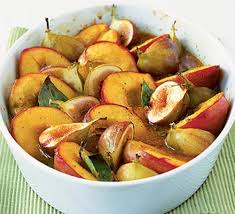
Roasting Cooking Method
Roasting is a method of cooking that allows you to impart exceptional flavour to your food.

While it might seem confusing at first, it is quite simple once you master it.
It also happens to be one of the healthiest methods of cooking and can be used with a wide variety of foods; while you might think about just roasting meat, both vegetables and fruits can be cooked by roasting as well.
Tips and Tricks for Roasting Meat
To use the roasting cooking method on meats, you simply cook your chosen item “low and slow”; this means applying a low level of heat to the dish over an extended period.
While this method takes longer than other cooking methods, it is pretty much fuss-free — you simply need to prepare the item and then pop it into the preheated oven.
Minimal monitoring is needed.
In general, the larger the cut of meat, the lower the temperature.
At the highest, you might roast a smaller cut of meat at 325 degrees Fahrenheit and a more significant cut as low as 275.
Roasting provides the most even cooking of any method available and also allows you to cook meat to the exact temperature you like—there is no need to eat well-done beef unless that is your preference.
The only real downside to roasting meat is that it does not produce the darkened, crispy, flavorful crust that you likely desire unless you take an extra step.
This step, however, is quite simple—just start the roast at a high temperature and then lower it once the outside of the meat has turned brown.
Tips and Tricks for Roasting Vegetables
Not every vegetable is well suited to roasting.
Some are too skinny to hold up well to being in the heat for an extended period.
Others lose their colour and, while still flavorful, simply look unappetizing.
Vegetables which roast well include carrots, potatoes, onions, brussels sprouts, eggplant, sweet peppers, and cauliflower.
Unlike roasting meats, roasting vegetables requires the application of high heat.
It is recommended that you preheat your over to 450 degrees Fahrenheit, allowing your vegetables to both brown and cook at the same time.
You can season and flavour your vegetables as you see fit, through tossing them in some oil before roasting is recommended to prevent them from drying out.
When placing them in their roasting pan, make sure you are not overcrowding them.
If you do, the moisture they release will cause the veggies to steam instead of roast.
Tips and Tricks for Roasting Fruit

Just as was the case with vegetables, not all fruits are well suited to roasting. Roasting a banana, for example, will produce a less than appetising result.
However, many “fall fruits” are well suited to the roasting method; apples, pears, and stone fruits are all excellent choices for roasting.
Also like vegetables, fruits need to be roasted at higher temperatures.
You will want your oven to be at 375 degrees Fahrenheit at the minimum, allowing the fruit to cook without wilting and helping the fruit to caramelise.
The fruit you select should be ripe, but not overly so, otherwise the moisture will steam the fruits instead of roasting them.
The process of roasting the fruit allows the flavour of the sugars to become concentrated, amplifying the sweetness.
Cooking Class Singapore is specialised in getting cooking and baking information and learning to your fingertips.
If you like to attend a hands-on public or private class, contact us for details.
